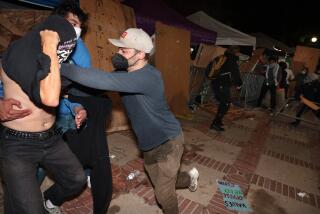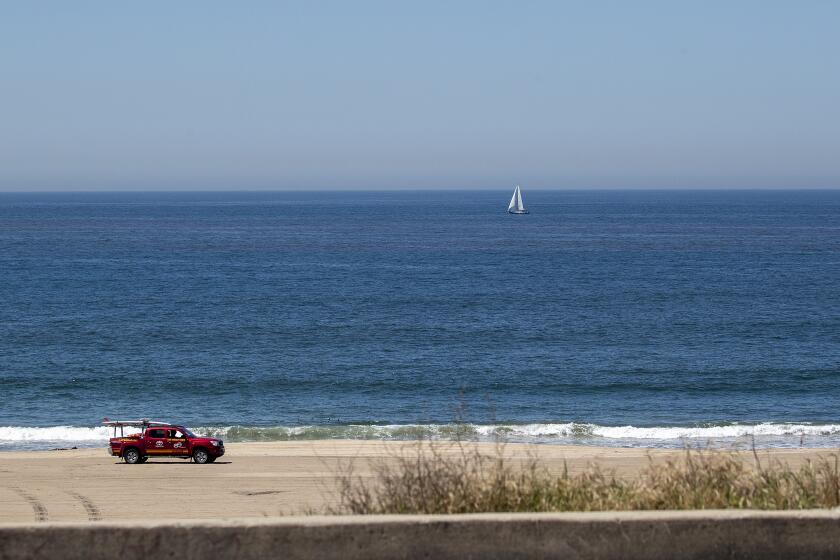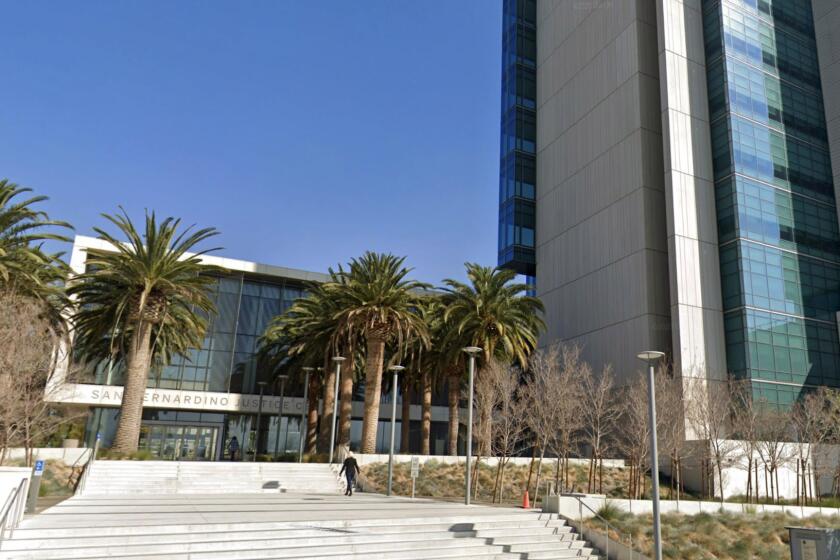Fire Officials to Enforce Brush Clearance Codes : Malibu: Property owners face prosecution if they fail to cut brush to a maximum height of 3 inches within 100 feet of any structure.
Taking a tough stance to prevent a repeat of last year’s disastrous wildfire, Malibu city officials are preparing to prosecute landowners who violate the municipal fire code’s brush-clearance requirements.
It is believed to be the first time a city served by the Los Angeles County Fire Department has sought to use prosecution to enforce brush-clearing requirements, said Chief Paul H. Rippens of the county Fire Department’s forestry division.
“This is what should be done,” Rippens said. “I guess after the fire last November it really woke up a sleeping giant out there, and the people, the city and the homeowners are upset over the loss of homes.”
Hoping to avoid a similar tragedy, the city earmarked $10,000 of its legal budget in May for the prosecution of property owners who fail to cut all brush down to a height of 3 inches or less within 100 feet of any structure and to clear all brush within 200-feet of structures in so-called high hazard areas.
Property owners were warned as early as February, when the Los Angeles County Department of Agriculture sent notices requiring brush clearance by May. Then the county Fire Department made its first round of inspections, notifying about 150 property owners to comply within 30 days.
Fire officials reinspected the properties, referring the remaining offenders to the city prosecutor, who earlier this summer sent letters asking for brush clearance within 14 days, said Sarah Maurice, the city’s code enforcement officer. Fire officials are now conducting final inspections of the properties that were out of compliance, mostly in the city’s western end--the brush-dense Malibu Park area, which was untouched by last year’s firestorm.
One resident, who had received a letter from the city and subsequently complied, applauded the city’s intentions while objecting to the use of threats.
“I didn’t like getting a notice in the mail that said, ‘If you don’t do this, we’ll do that,’ ” said Benedict Freedman, a resident of Latigo Canyon since 1961.
But Freedman added: “We’ve been through several fires, losing a house in 1972. We liked the chief telling us that we ought to cut down vegetation around our driveway so he could get his machinery up here. I like the idea that it is in their plan to fight for the houses of Latigo Canyon.”
City officials had begun discussing the creation of an aggressive brush-clearing program a month before last year’s wildfires. After the November firestorm, the program was viewed as essential.
According to Maurice, 30 of the 150 properties found to be out of compliance on the first brush inspection have received a final inspection. Of those, he said, half remained out of compliance. The owners of the 15 parcels will be cited for an infraction, punishable by a fine, and must appear before a judge.
“I am surprised by the number of people who refuse to recognize that brush clearance is endangering not just them but their whole neighborhood,” Maurice said. “You may have a fancy (fire resistant) foam system or a (water) pump, but it won’t do a hill of beans without brush clearance. The history is (fire) happens every eight to 10 years. We have tried to keep public awareness lifted so that Malibu doesn’t have to burn to remind people.”
In that spirit, the city and Los Angeles County Fire Department sponsored a Fire Preparedness Fair last weekend. About 66 vendors set up booths in the Civic Center parking lot, selling a panoply of goods, including pumps to draw water from hot tubs and pools, ceiling sprinklers, generators, “fire-safe” roofing, steel tiles, concrete building materials, steel-frame houses, and fire resistant foams and sprays.
About 4,000 people attended, some from as far away as San Luis Obispo and San Diego. About $10,000 of the proceeds from booth rentals at the fair will be used to fund the city’s Emergency Preparedness Study Group Plan, said Ted Ravinett, chairman of the fair and of the city’s Emergency Preparedness Study Group, which has designed a 12-part emergency action plan for future Malibu disasters.
“People who were burned out are still walking around in a daze,” said Ravinett, whose condo below Pepperdine University has survived three Malibu fires over the last 16 years. “No place is safe in Malibu. (Another fire) is coming. It just depends on where the winds blow.”
Fire survivor Art London, whose house in Carbon Mesa burned down during last year’s fire, has plans to rebuild his home but has not yet received city approval for the project.
“It’s hard not to be fatalistic,” said London, a retired attorney who was shopping the booths in the 97-degree heat. “We could not even begin to get to our house during the fire and neither could the Fire Department. . . . We had a pump, but it burned to the ground.”
The more fortunate, such as Manfred J. Neuss, a resident of Calabasas whose home survived last November’s fire, shopped with a vengeance.
“I believe in preventive medicine,” he said, carrying an armload of product information pamphlets. “I plan on buying a pump. I live in Vista Point. No one’s house burned there.”
To hammer home the finer points of fire prevention, firefighters ignited wooden models treated with fire resistant materials, demonstrating the rate at which treated structures burn compared to untreated ones. Before the fires were set, a public information officer for the Fire Department issued an ominous three-part warning: “The brush has dried out a month ahead of schedule. We have Santa Anas still to come. And no hope of more moisture.”
But the main message from fire officials, backed up by the city’s determination to prosecute violators of brush-clearing requirements, is that no amount of “fire safety equipment” will stop fire from consuming a house with dense brush, grasses and trees growing next to it.
“A recent study done at UC Berkeley on the (1991) Oakland fire and the (1990) Santa Barbara fire found that houses with a 30-foot defensible space had a 91% survival rate,” Rippens said. “And those with 100-foot clearance had a 98% survival rate. Those are good odds there.”
More to Read
Start your day right
Sign up for Essential California for news, features and recommendations from the L.A. Times and beyond in your inbox six days a week.
You may occasionally receive promotional content from the Los Angeles Times.






